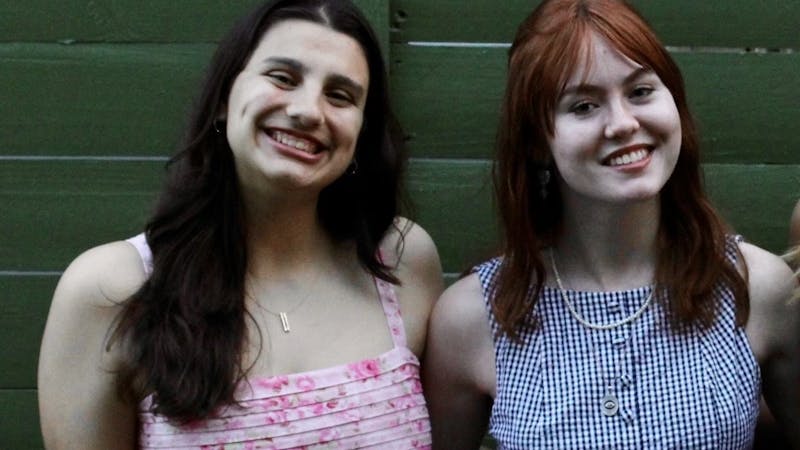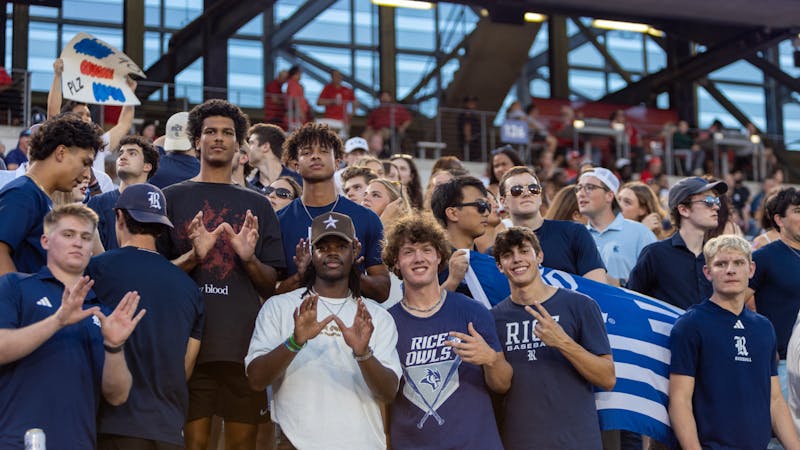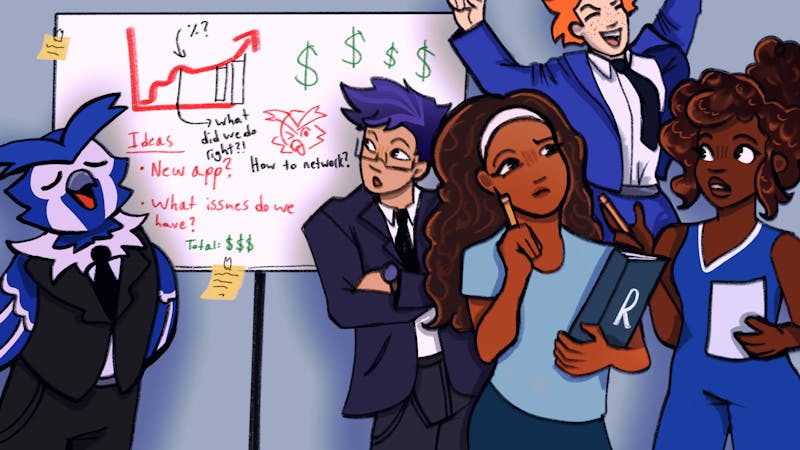RNASA reconnects with Indigenous community on campus
Rice currently has less than 10 Native-identifying students on campus, according to Catherine Clack, the associate provost for diversity, equity and inclusion. Houston, however, is home to over 80,000 people who identify as American Indian or Alaskan Native and is a city with a deeply rooted Indigenous history and culture — though it’s a history often forgotten and rarely spoken about.
The Rice campus itself sits on the traditional homelands of the Karankawa, Coahuiltecan, Atakpa-Ishak and Sana nations, and today, Texas is home to three federally recognized tribes: the Alabama-Coushatta, the Ysleta del Sur Pueblo and the Kickapoo.
Weston Twardowski, a professor in environmental studies and theatre, said that the Indigenous population in Texas is also likely to be higher than census records show. Faced with a long legacy of violence in the 19th and 20th century, including abductions of Native children, forced assimilation and other abuses, many Indigenous people lost their culture and hid their identities, Twardowski said.
“A lot of Indigenous leaders I’ve talked to in the state think the Indigenous population of the state is way higher than people want to say it is,” Twardowski said. “If you were over in West Texas and Indigenous, it was much safer to identify as Spanish in heritage than it was to identify as Native.”
Recently, though, Twardowski said there has been a movement of people reconnecting with their Texas Indigenous roots. The Karankawa, a tribe often written off as extinct in Texas history classes, is one of the tribes currently working to reclaim their Native culture and heritage. There has been a recent rise in people discovering long-lost and difficult stories of the Native heritage, he said.
“The Karankawa are probably the most prominent [tribe] in Houston … and there’s been a real resurgence in people reclaiming that identity. But by the 1830s, or certainly the 1850s, history texts will tell you they were extinct. They were gone,” Twardowski said. “Certainly some had migrated out, but some still remained throughout most of Texas. [Now] you’re seeing a lot of activity among youth Indigenous leaders who are really trying to reclaim that [and] really trying to reconnect with these histories.”
Twardowski, who first got involved in Indigenous studies during his doctoral program, recently put together a task force at Rice exploring the possibility of an Indigenous Studies minor, as well as opportunities for more research work in these areas. He also said the task force will host an inaugural symposium centered around Indigenous research and studies in the spring semester.
Despite this renewed momentum surrounding sharing Native histories and culture within Texas, Rice has not had a Native American student association since 2015.
Isabella Bourtin and Elisabeth Millington, co-presidents of the newly revived Rice Native American Student Association, decided that they wanted to change this and began the process of reviving the organization.
“[Millington] and I [became] really good friends last year … and then one day we found out we’re both Native American,” Bourtin, a McMurtry College sophomore, said. “So we banded together and this summer worked on getting it reactivated [by] emailing people that work with the Office of Multicultural Affairs.”
Millington, a member of the Caddo Tribe of Oklahoma, said she grew up surrounded by Indigenous culture, but found that Rice lacked opportunities for Native American students to get involved on campus. This spurred her interest in becoming a co-president of RNASA.
“While I was in high school and middle school, I was really involved with the Indigenous programs at my school. In Oklahoma there are a lot of Native American and Indigenous people, so I was used to having that community there,” Millington, also a McMurtry sophomore, said. “I had originally wanted to minor in Indigenous Studies when I was coming to college, but Rice unfortunately does not have [an Indigenous Studies program]. I was looking into joining an affinity group or a student association for Native American students at Rice, and I realized there really were none.”
Aj Jacobs, the RNASA secretary, echoed this sentiment. Originally from a small town in North Carolina, Jacobs is a member of the Lumbee Tribe, largest tribe east of the Mississippi River.
“I’m from a very homogenous community and have always been around so many Native people and Indigenous people my whole life. Coming here and knowing one other Indigenous student, that was interesting,” Jacobs, a Duncan College sophomore, said. “Over winter break, Weston Twardowski reached out because he wanted to start working on creating an Indigenous Studies minor, so through that group I met some other Indigenous people as well.”
Shortly after this, Jacobs said he heard Bourtin and Millington were reviving RNASA, and he attended the first meeting. He said one of his biggest reasons for joining the organization was simply to spread knowledge about Indigenous culture and community — something he thinks the Rice community currently lacks.
“There was a time my freshman year [Orientation] Week [that] I remember I told this one person I was Indigenous, and they literally asked me, ‘Oh, do you live in an igloo?’” Jacobs said. “I was like, ‘I guess you’ve never been around an Indigenous person before.’ So for that purpose alone, just for information and people educating themselves, I think [RNASA] is a fantastic thing.”
RNASA also started a partnership with the American Indian Center of Houston. The organizations recently co-hosted an event on the importance of Indigenous voting with AICF and plan to collaborate on more projects in the future. Bourtin, a member of the Alabama Cherokee and Creek tribes, said she had been in contact with AICH before RNASA’s founding.
“I reached out to them a while ago just trying to get involved in their program around Houston. When [Millington] and I got this club up and running, I reached out to them and said, ‘Hey, would you guys be interested in partnering with us for events?’” Bourtin said. “In two weeks we have a cultural festival coming up in the Grand Hall that we’re hosting with them [and] they’ll send us recipes because we have the Pangea Potluck coming up next week.”
Millington and Bourtin said one of their difficulties has just been getting people to join the club. Bourtin said they want to encourage more Native students to join, as well as non-Native students interested in learning about Native culture.
“I feel like there’s a lot of stigma on campus around people who are not a part of a cultural identity feeling like they can’t get involved in that culture because of the fear of appropriating it,” Bourtin said. “That’s something I think has been a huge obstacle. We’re all about inclusivity and opening it up to everyone who is curious about learning.”
As for the future of the organization, one thing Bourtin, Millington and Jacobs all hope for is stability. Each said they want to be able to source more members for the club, Native or not, as well as provide the structure for a long-lasting organization.
“I just hope that we can get a large group of people who are actually interested in and committed to the cause of keeping [RNASA] active on campus,” Bourtin said. “I want to get a solid base of people that will keep it running even after we’re gone and then after they’re gone. My goal is for it to be stable instead of up-and-down or fizzling out.”
Millington and Bourtin said they also hope to help others become more comfortable with and involved in their own Indigenous identities.
“I want people to know that even if you’re Indigenous but not in a federally recognized tribe, that doesn’t mean you’re not Indigenous,” Bourtin said. “I feel like a lot of people feel like they’re not really Indigenous … I want everyone to know that it’s not taboo.”
“When I was little I grew up in a situation where I didn’t really get to see a lot of the Indigenous side of my family, but as I got older I became a lot more involved in the Indigenous community,” Millington added. “I think it’s really important to make sure that people don’t forget their identities and that we keep the culture alive.”
More from The Rice Thresher

Letter from the editors’ desk: Journalism is a community practice
First of all, we want to thank y’all for picking up the paper, reading our stories and answering our questions all the time. We want to inform students, staff and the community about what is happening at Rice, and the only way to do that is by hearing from you. Talk to us, email us, submit tips on our website, write an opinion piece; however you want to communicate, we always want to know what matters to you.

12 things to know about Rice Athletics
The Owls are members of the American Conference, previously called the American Athletic Conference. The football program competes within the NCAA Division I Football Bowl Subdivision. Across campus, over 500 student-athletes currently compete in 14 varsity sports, with the 15th sport—women’s golf—to play its inaugural season in Fall 2026.


Please note All comments are eligible for publication by The Rice Thresher.